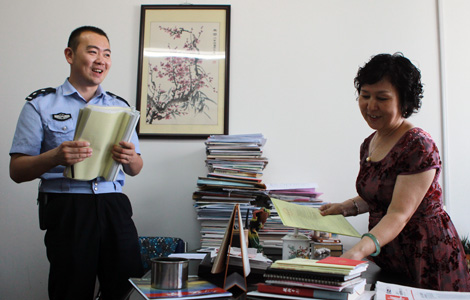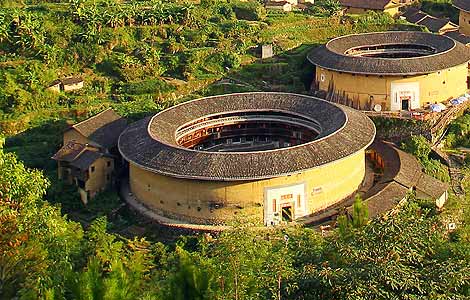Provinces submit territorial development plans
Updated: 2013-08-14 07:38
By Zheng Yangpeng (China Daily)
|
||||||||
China's provincial governments are submitting territorial development plans, in a bid to reverse the country's previous development model and protect the environment.
Fourteen provincial-level governments have submitted their plans to the National Development and Reform Commission, China's top economic planning agency, Economic Information, a newspaper affiliated with the Xinhua News Agency reported.
The move is the follow-up of a 2011 program that the country initiated to rein in the reckless development of land and resources.
The 2011 program - the first of its kind in China - divided the country's territory into four categories: development zones to be optimized, key development zones, limited development zones and zones where development is forbidden.
According to the 2011 plan issued by the State Council, China's cabinet, the development of 30 percent of the national land will be planned by the State, while the development of the remaining land will be decided by provincial governments. Each region has to determine its development models based on its natural resources.
The central government will adopt different policies toward different development zones, the newspaper reported.
For instance, development zones to be optimized, generally referring to well-developed and over-developed areas, will be encouraged to increase their international competitiveness.
Key development zones - less-developed areas with great potential - will be encouraged to accelerate their urbanization process.
Zones where development is forbidden, usually areas with vulnerable ecological systems, will receive funds from other regions as compensation.
"These policies aim to achieve a portfolio effect of the various policies, including incentives and punishments, to better direct each region to integrate development and conservation," said Wang Yiming, a research fellow at the Academy of Macroeconomic Research at the National Development and Reform Commission.
Experts said the program reflects a change of the previous development mindset, in which each region, regardless of its location and natural capacity, was encouraged to boost its GDP. For example, in Anhui province's territorial development plan, about 40 counties and districts, or 54.5 percent of the province's area, are categorized as "limited development zones". Their major designated function is to provide grain and other agricultural products, other than expand their industrial sectors and urban areas.
These regions and the zones where development is blocked will not be judged mainly by their GDP, a local Anhui newspaper reported.
Experts said that if the new approach is implemented, the 2011 program will be easier to implement. China's local officials are routinely evaluated by their jurisdictions' GDP output, fiscal revenue, fixed-asset investment value and industrial output. This evaluation system has pressured them to chase large industrial projects rather than nature conservation projects.
Fan Jie, director of the Sustainable Development Research Center of the Chinese Academy of Science, said that it's critical to change the current fiscal system and the officials' performance evaluation system to pursue sustainable development.
zhengyangpeng@chinadaily.com.cn
(China Daily USA 08/14/2013 page15)

 Huawei unveil Ascend P6 smartphone in Vienna
Huawei unveil Ascend P6 smartphone in Vienna
 That's one cool game of mahjong
That's one cool game of mahjong
 Isinbaeva leads harvest day for host Russia
Isinbaeva leads harvest day for host Russia
 Perseid meteor shower puts on show in night sky
Perseid meteor shower puts on show in night sky
 Bird flu, slowdown hit sales at fast-food chains
Bird flu, slowdown hit sales at fast-food chains
 PetroChina poised to dominate Iraqi oil
PetroChina poised to dominate Iraqi oil
 Marriage attitudes slowly change
Marriage attitudes slowly change
 On frontline of fight against crime
On frontline of fight against crime
Most Viewed
Editor's Picks

|

|

|

|

|

|
Today's Top News
Brazil demands clarifications on NSA surveillance
2nd-generation ID cards to include fingerprints
Chinese students boost boarding business in US
TCM chain probed after illegal house exposed
Friends of accused Boston bomber due in court
Economic hub on Bohai Bay
PM to visit China for milk scare
Donors of organs easing transplant shortages
US Weekly

|

|




